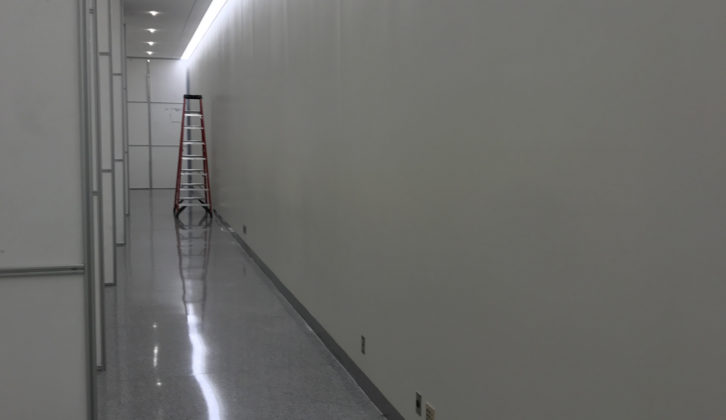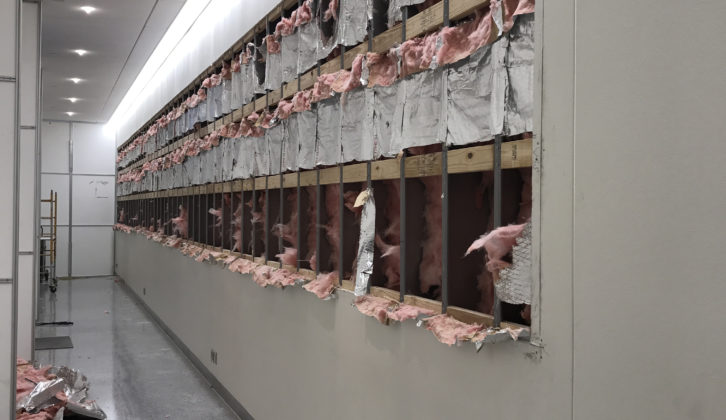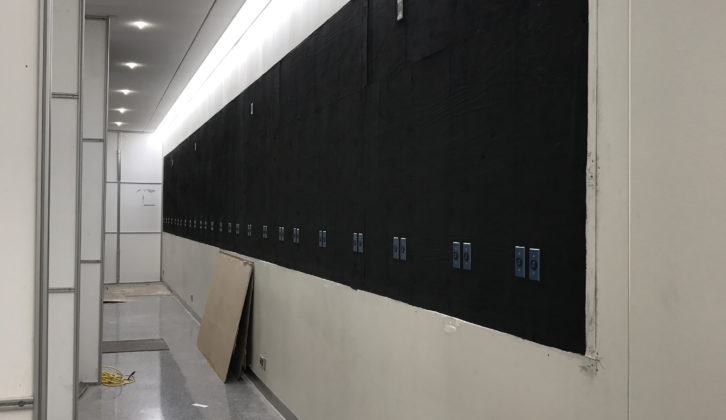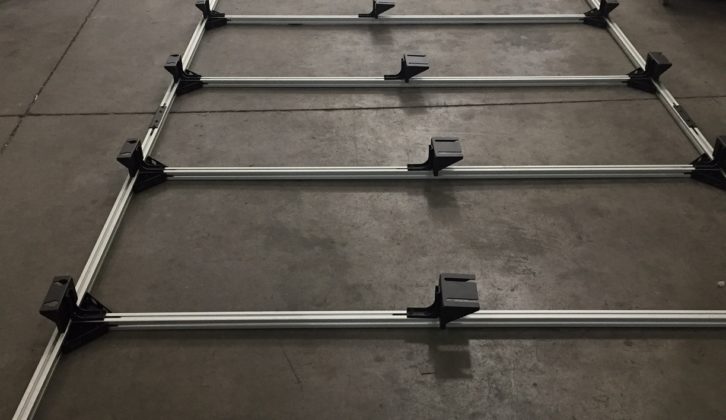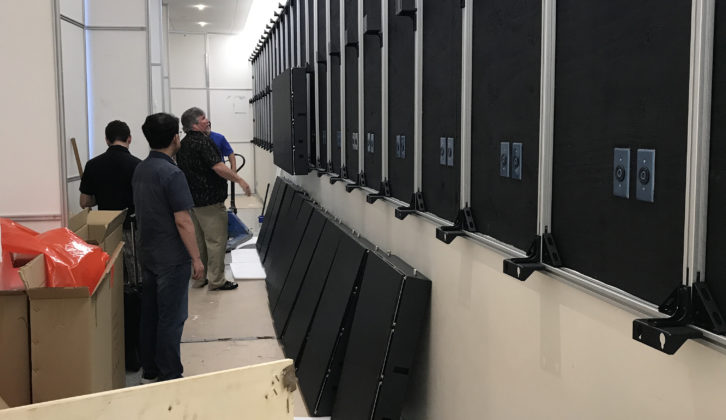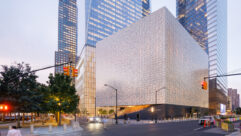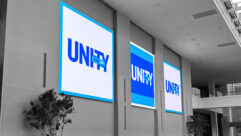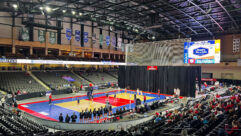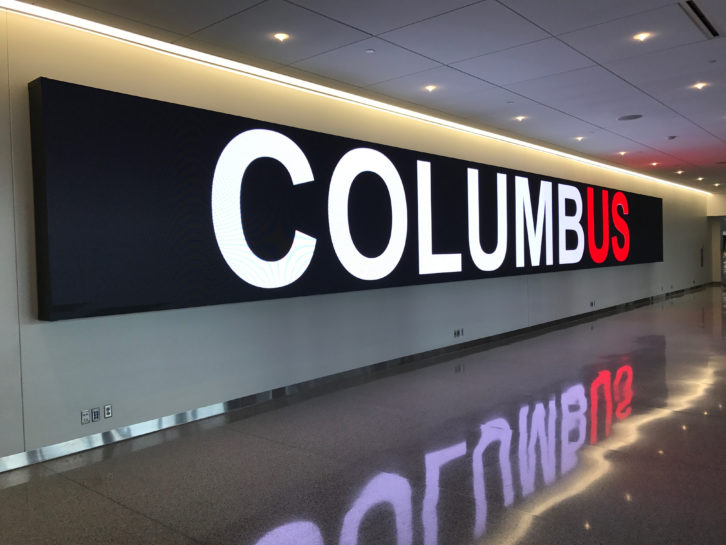
At a big convention center you’ve got attention grabbers coming from every direction, but the massive display in the connecting hallway of the Greater Columbus Convention Center in Columbus, Ohio will stop you in your tracks with a barrage of art in motion. Ambient light levels made it a tricky installation but Coffman Media was up to the task and co-founder Jason Ault is here to tell us how they got it all to work.

SVC: Ok, we’ve got a big digital signage display project to talk about. It’s a good right-in-the-neighborhood project for your company. But first tell us what’s up lately with Coffman Media.
Jason Ault: Coffman Media was founded in 2010 by myself and two other business partners. We’re a leading digital signage solutions provider based here in Dublin, Ohio with a footprint reaching as far as Trinidad Tobago, Jamaica and a lot of places across the United States. Our team focuses on helping clients harness the power of digital signage to connect in the healthcare, corporate communication, quick-service restaurant, education and retail verticals.
This was a strikingly beautiful addition to the Greater Columbus Convention Center, and it was just part of a larger renovation for the facility. How big a project was the whole thing?
The overall renovation was right around $140 million and took over three years of design and construction to complete. And as you mentioned, we were a small part of that larger renovation with the LG Direct View LED video wall. And we did some other digital signage throughout the concourses as well.
And where did Coffman Media come into this whole big process? Was that big video display something they had in mind right from the beginning or did they look around in that hallway and decide they needed something special there?
I think they had the idea from the beginning. One of their board members actually visited the World Trade Center complex mall back in 2016 and visited the 280-foot Direct View LED that was installed there. He had this idea to install a similar but smaller-scale version of what he saw in the convention center connector hallway. They looked through a lot of different solutions and options; we were contacted in March of 2017 by Reese Brothers, who is the art curator for the Greater Columbus Convention Center, as they were on this quest. They couldn’t find any solution that could meet the 4-millimeter pixel pitch quality that they saw in New York and also stay within their budget. So that’s when we were engaged and started walking through the process.

It’s very high traffic hallway connecting wings of the building and this display is huge and impossible to miss. It’s made of 600 display panels and the overall size is something like 60 by 7 feet?
It is. It just came under a couple inches shy of 7 feet tall by 60 feet wide.
And one of the complicating aspects on this is the fact that the other side of that hallway is a complete wall of windows that throws in a huge range of ambient light levels.
[Chuckles] Absolutely. The ambient light was going to be a big concern for us. As you mentioned, opposite of the video wall is 100 percent windows, floor to ceiling, and come around 3:00 pm – because it faces due west – we have sun just beaming onto that video wall. So we had to go with a solution that had enough brightness so we didn’t lose the integrity of the content that was going to be shown on this display.
How far back from the video display can viewers get? This thing is big enough to where you would have to get back some distance to see the whole thing.
Yeah. Optimal viewing distance is four feet or so; three-and-a-half to four feet per pixel or per millimeter of pixel pitch. So optimal viewing distance is right around the 14-15 foot mark. But the hallway is probably 30 feet wide, if not just a little bit wider, so they can get plenty far back enough to where they can see the complete visual, but they can also get very close to within grab of the standard passer-by, child or adult alike.
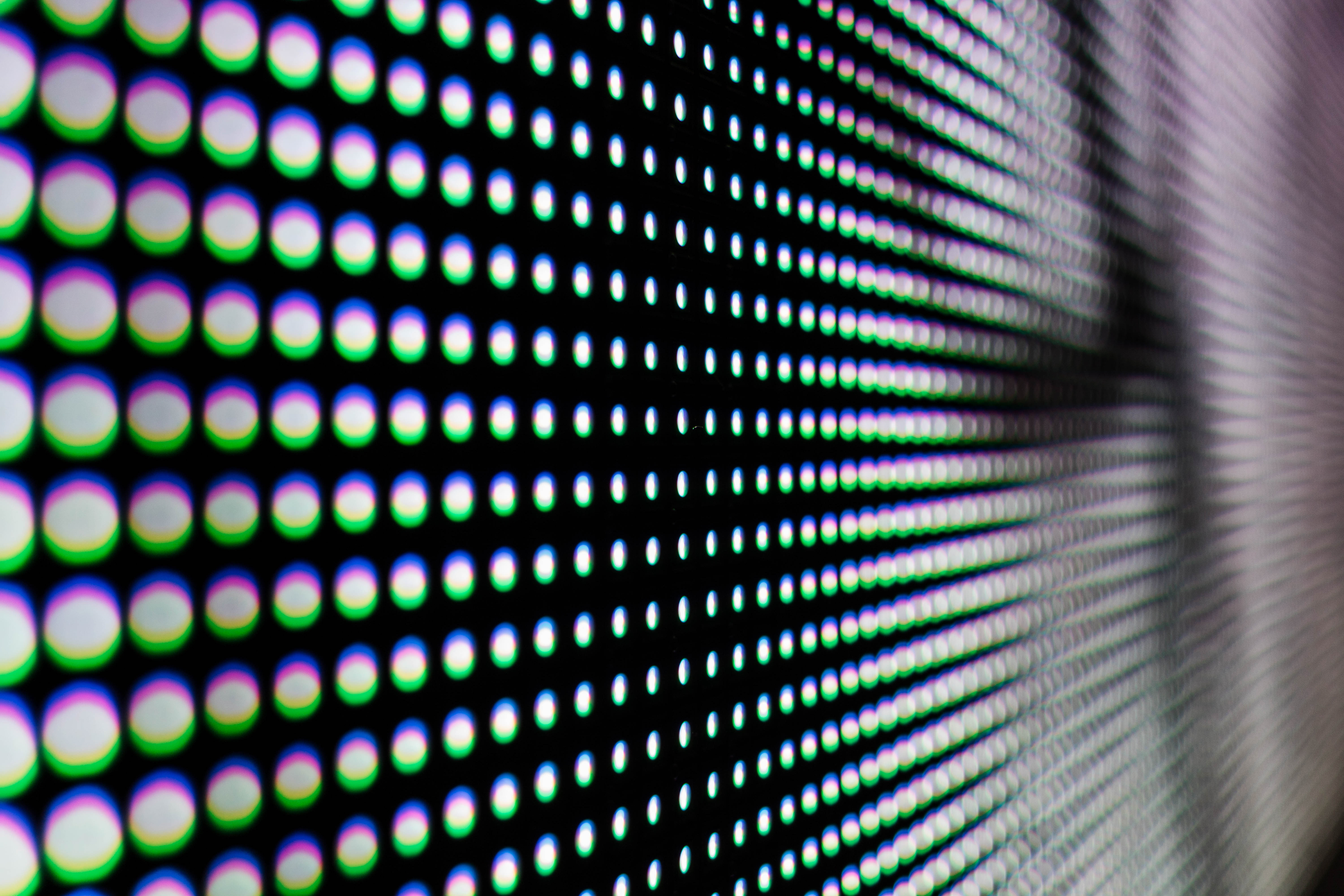
And what sort of content do they see on this video wall? It’s mainly sort of a motion art display isn’t it?
It is. They’ve done a really great job. Reese Brothers had this idea to kind of curate all of the physical art that was throughout the facility into a digital format. So a lot of the physical pieces you see throughout the Greater Columbus Convention Center have been digitized in a unique and engaging way onto the display as well as highlighting their partnership through the Trade and Visitors Association Experience Columbus. They also provide some really stellar graphics. And then they’ve contracted with a lot of media companies and the Columbus College of Art and Design has also placed some content on there as well. So they’re using it as a very community-based art display as well as getting into advertising upcoming events and conventions that will be housed at the facility.
You knew that the widely-varying ambient light level would be a challenge on this so what sort of display selection process did you go through? Were there a lot of different makes and models considered or did you already have your eye on one product from the start?
We knew their budget from the very get-go, because they were very transparent in that aspect. We knew that Direct View LED was going to be the route we had to take rather than using a backlit LED/LCD panel to create a tiled video wall. What they saw in New York was a 4-millimeter pixel pitch. And what we could present to them and be under budget was also a 4-millimeter pixel pitch. So we were like-for-like, and luckily that LG unit comes in 1,000 nit brightness, so we were able to combat the ambient light concern as well. This just happened to be LG’s first North American install and we were happy that we chose LG to bring over to market.
In order for the installation to go quickly a lot of things had to be done to prepare the space. What did you have to do to get the wall ready and the space all set?
Yeah, that’s a great question. When we first walked the facility there was a blank white wall. No thoughts of anything else going on there. So we peeled back the drywall, to find out what structural elements we had to work with. We had to take a look at putting over 3,500 pounds of display on this wall. Can the integrity of the building support that additional weight? So we had to go through the engineering process and luckily the beams we were going to be tying into were able to facilitate more than enough weight. And then we had to go through bringing in the electrical that’s required to power such a very large display as well. And last, but not least, block out the wall as well, so adding in the plywood backers, to be able to affix the mounting solution when it was time to install the unit. We worked hand-in-hand with Peerless and their modular mounting solution and installed the 50 total cabinets that comprise the 600- plus individual panels in a 2 x 25 cabinet-long configuration. And the total installation was actually complete in just one day. We actually pre-configured the Peerless mounting solution off-site in our warehouse to ensure that everything would come together correctly. And that also was a big factor in ensuring we could install all the hardware, mounting and the cabinets in one day.

It’s a lot of weight and a lot of power. Were there already people moving around through this hallway? Was it already open when this was going on?
We were open from start to finish. And in fact, throughout the course of the three-year renovation, the building never lost a beat, never lost a convention during that aspect. So that was a very big tip of the cap to the larger construction crews that were doing a lot of the facility renovations. We actually built a contractor wall that was about 10 feet deep by 80 feet wide so everybody could work comfortably within the environment from our electricians and our data folks to our final installers.
And once it was all in, the hallway got really shined up because when you look at the images, the floor is so shiny it looks like there’s a twin display down there, too.
[Laughs] Absolutely. They really like that flooring. And that was something we had to be cognizant of, of not marring that, because that was already in place during our final installation.
Where are the displays controlled from, and what sort of software do they use to create and push content to them?
The control point is about 30 feet away from the actual video wall itself. That’s where we have a small rack that houses the three LG controllers and a single media player that has three video outputs. The content on the video wall is being powered by our long-standing CMS partner, Signage Live, which gives access to the Greater Columbus Convention Center via any web browser. They can log in and remotely change the content, change schedules, day part, what have you.
Coffman built a contractor wall that was about 10 feet deep by 80 feet wide so everybody could work comfortably within the environment — from electricians and data folks to final installers
Reese Brothers are the art curators you mentioned last week. Were the content ideas still evolving as the project went on or did they already know what they wanted to present to the public on this as soon as it was ready to go?
They had an idea, I would say, two to three months prior to us being selected as the vendor. But then they had to work within the confines of how the software accepted the content with the right file extensions, you know, stay within the right video codecs, etc. So while they had that kind of framework in mind we had to help them along to ensure that we executed their vision properly. They were phenomenal to work with. We worked with them hand-in-hand to ensure that the content they wanted to use from day one was going to be able to place seamlessly without any issue because at 7 feet by 60 feet, that’s kind of an odd resolution when you break it down. It’s 480 pixels tall by 4,500 pixels wide. That’s definitely not your standard 16 x 9 ratio.
And how is the video path set out on this wall? How does the video signal get everywhere it has to go?
It’s actually quite interesting. It really operates as one large display. So within our control room and our server rack we have one media player that’s a windows-based system running Signagelive. And outside of that we’re coming out of that media player with three video outputs. Each of those outputs goes into a single LG controller and each one of those LG controllers is mapped pixel by pixel to the respective area on the video wall. So it took a lot of programming at the onset, a lot of mapping out the pixels, but at the end of the day through Signagelive you’re able to see it as one display—so we could take a full 480-pixel tall by 4,500- pixel video image, web page, and display it very easily. We don’t have to worry about chopping up pieces of content and syncing them together, which makes it very, very nice for the video creation folks.

What was the display testing process on this huge video wall?
We really just tested out the inaugural day content before the construction walls came down. We had about 48 hours to run through content tests, run through calibrations. That’s driven by three different controllers, so we had to make sure each of those controllers were configured properly for red, green, blue, the brightnesses were set and calibrated correctly, and then set the overall calibration to bring in enough of the nit brightness to facilitate the western sun that we get in the later part of the day.
But of course the weather you happen to have going on would also have a big impact on the ambient light level.
That’s absolutely correct. And you’re able to see it from High Street, which is one of the main north/south thoroughfares through downtown Columbus. And then across the street at the Hilton Hotel, you can also see it from some of the windows that face outward to the convention center. So it becomes quite the spectacle piece through all those windows. So while the ambient light was a factor we had to kind of battle with initially, it really has opened the doors to allow a lot more public than just the passerby traffic inside to see this element.
These things have to have maintained once in a while; do you have access from behind the wall or is it all from the front of the display screens?
Yes, LG makes it very easy to do maintenance on this type of display. Each of the modular 12-inch LED panels can come off the cabinet. With earth magnets, there’s a special tool that pops each one of those elements out. We’re able to go in, vacuum out, clean, brush out with some anti-static brushes, and yes, once a year we go in and configure. And it’s all front-serviceable so we should never have to get behind any of the displays, whether it’s changing out a power supply, a control board, or some other ribbon cable that may fail over time. We should be able to service it from front side only.

What sort of digital signage projects are coming up next for Coffman Media now?
We’re continuing to grow our footprint into the direct-to-LED market space, again leaning to the forefront with LG. We think their product is second to none in this category. As well as we’re continuing to garner new quick service restaurant rollouts for a 900- unit pizza chain, and we’re also working with another 600-unit sub shop as well. And then doing a lot in the educational and retail space. And then the direct-to-LEDs are also making a splash into the corporate lobby environment. So we’ve got a few projects kicking off in that arena as well.
